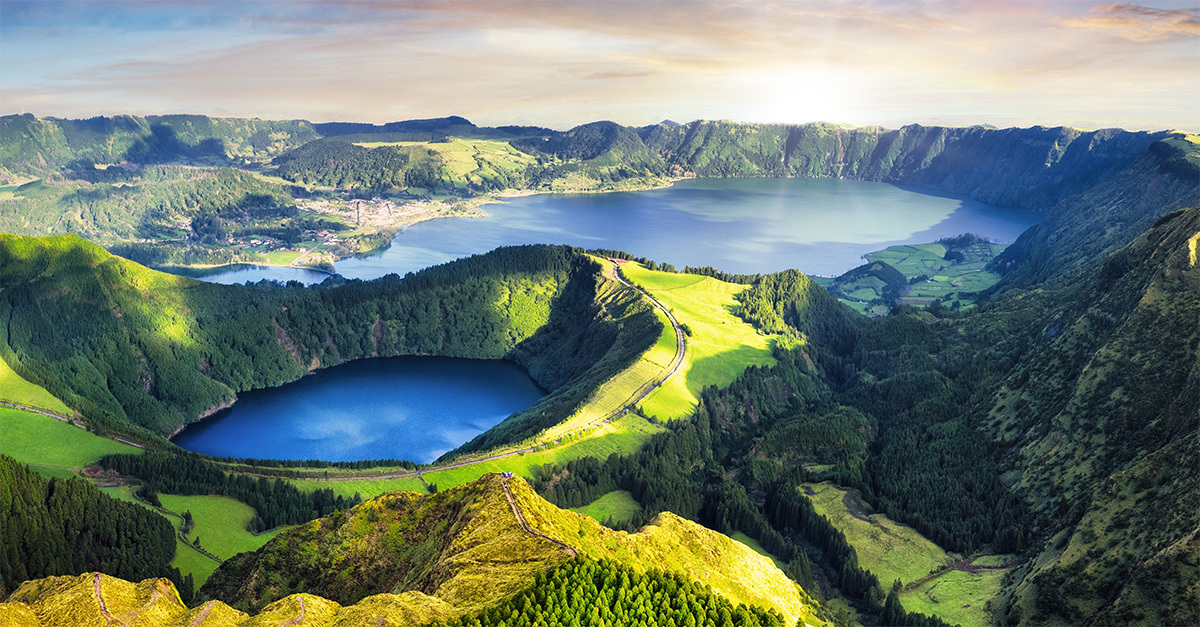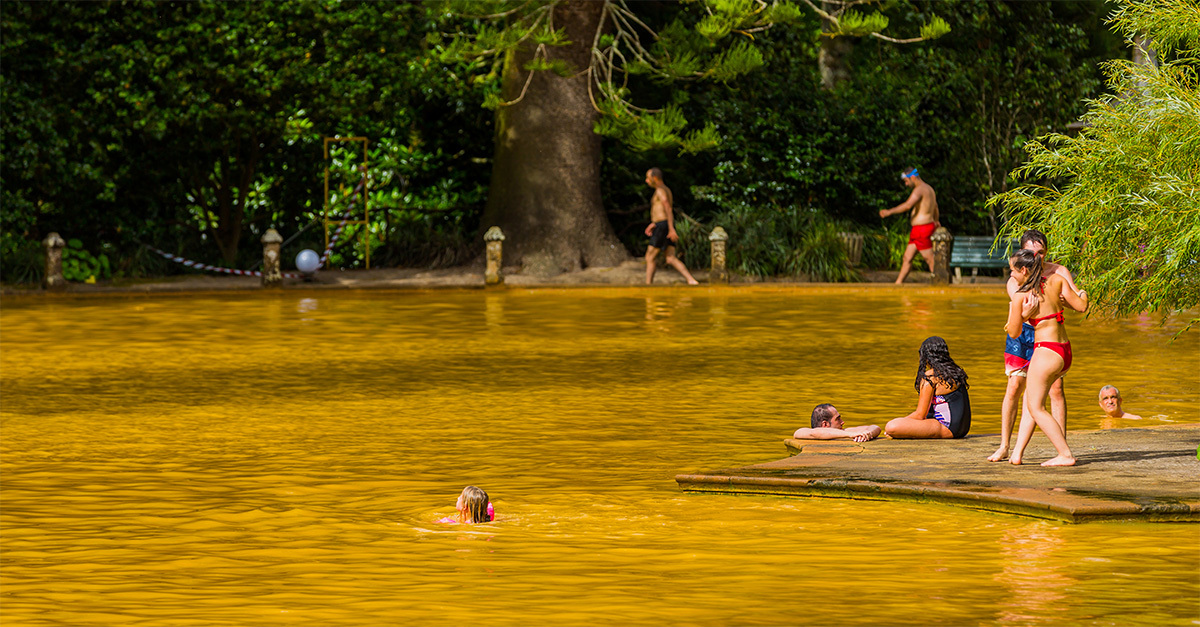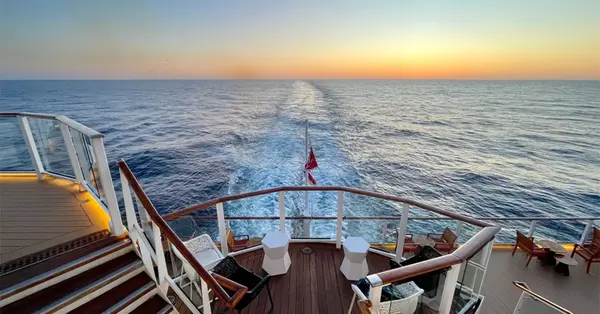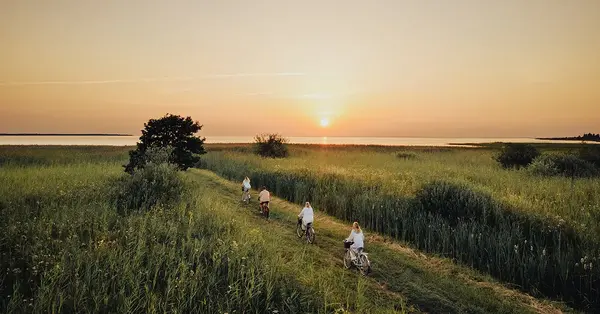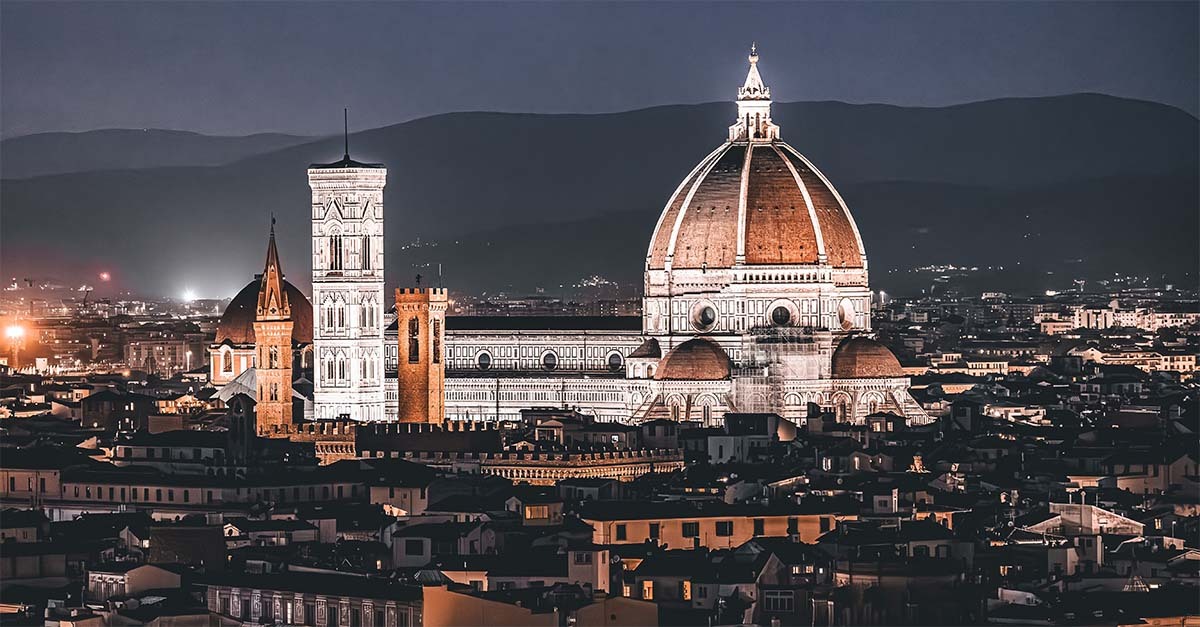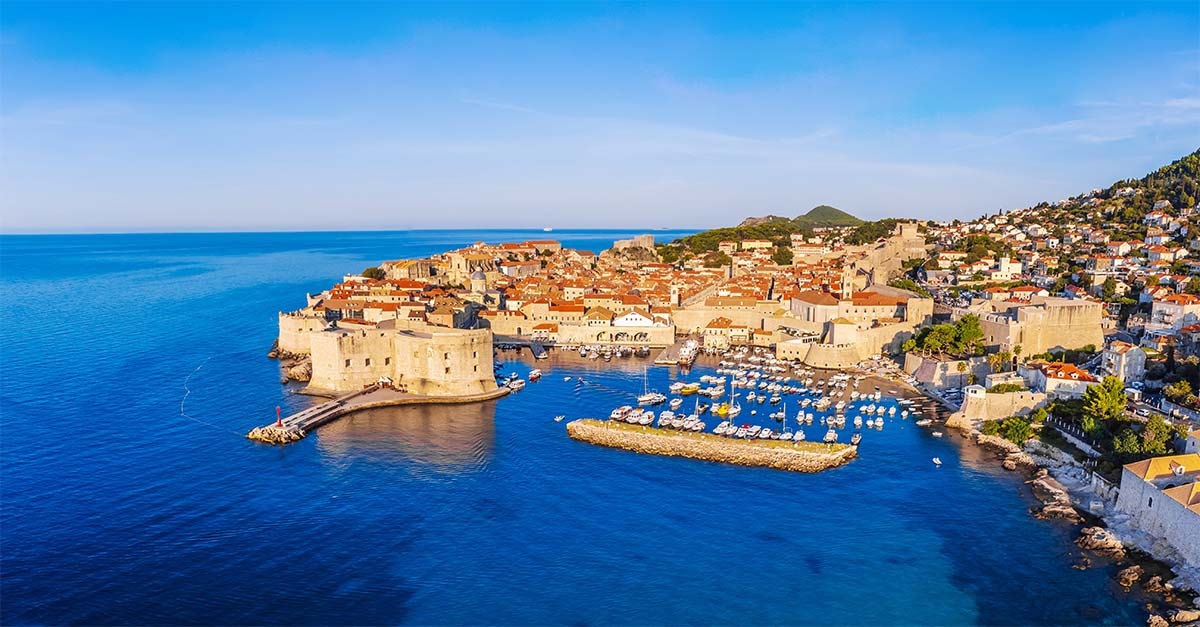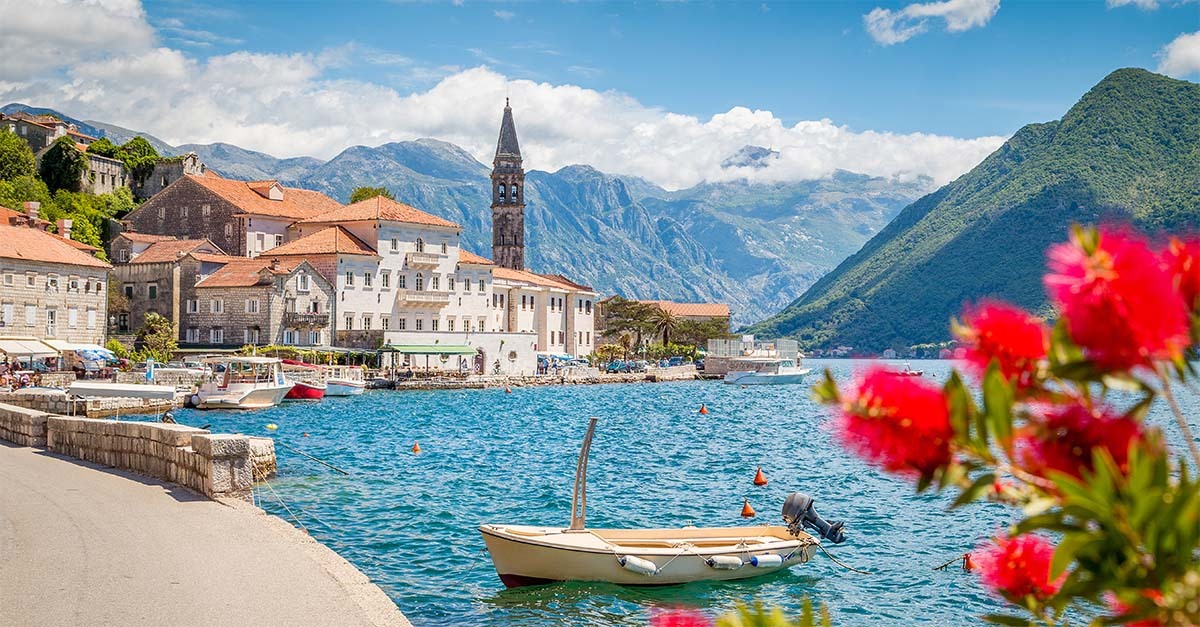You are viewing 1 of your 2 free articles
Our guide to the Azores
The volcanic islands of the Azores are a playground for travellers who love hiking, nature, wildlife and wine
Click here to download and save as a PDF
Geological time is usually beyond our comprehension. We don’t live long enough to watch a glacier carve out a valley or tectonic forces pile up mountains from the sea floor. Visit the Azores, however, and you’ll see the life-cycle of a volcano showcased across the nine islands of the archipelago, like a full-size, step-by-step guide.
These Portuguese islands exploded into existence in the Atlantic relatively recently, by geological standards, only a few million years ago. The oldest siblings in the family – including four-million-year-old São Miguel, home to capital Ponta Delgada – are lush and green, the volcanic rock eroded to rich soil, the calderas draped in verdant vegetation, and in spring and summer mantled in clouds of hydrangeas that have become the islands’ signature.
In contrast, the youngest, Pico, a baby at just 300,000 years old, is still all rocky and inky, with twisted lava and a towering cone dominating its centre.
This vibrant variety is why clients should choose a multi-centre trip. The islands share similarities, and some activities such as hiking and whale watching are on offer everywhere, but each is unique, with its own character and idiosyncrasies. They’re like beautiful pieces of a jigsaw – glorious individually but stronger together. I saw three of the islands in a week, which gave me an action-packed taste of what the Azores has to offer.
Hot springs in Terra Nostra Park. Image credit: Shutterstock/Rui Vale Sousa
São Miguel: Calderas and hot springs
The most famous view in the Azores is to be found on its largest island, São Miguel. The Sete Cidades Lakes – a twinset, one green, one blue, ringed by a forest-clad caldera – are a must-see, though pick a sunny day to observe the most vivid colour difference. I stopped at the Vista do Rei viewpoint for photos, rather heartbroken not to have time for the five-mile hike around the rim of the caldera.
My guide, Andre Matias, took me instead for a short but beautiful stroll from the town of Sete Cidades along the shore of the limpid Lagoa Azul bay. Crowds flock to this famous spot, but for a quieter and no less beautiful attraction, recommend the Lagoa do Fogo.
Furnas Valley is the heart of São Miguel’s geothermal activity. This dormant volcanic crater is home to steaming fumaroles and bubbling vents, plus a range of springs with mineral-rich waters. Here, the 30-acre Terra Nostra park is home to thermal pools – tell clients to bring dark swimwear as the orange, iron-rich water stains – and gorgeous botanical gardens.
At Furnas Lake I watched how the signature local dish, cozido, is cooked. Huge cauldrons are lowered into ovens dug into the hot volcanic soil, and six hours later a tender meat and vegetable stew is ready to eat.

Terraced hillsides in the Azores. Image credit: Shutterstock/TTstudio
The mild, subtropical climate and fertile volcanic soil mean that vegetables aren’t the only things that grow here. I visited the Gorreana tea plantation and after viewing the verdant terraces and the heritage processing machinery, tried a tasty cup. At the Boa Fruta pineapple plantation, my guide assured me I’d taste the sweetest pineapple of my life – the true ananás, not the (apparently inferior) South American abacaxi.
After wandering through the Victorian hothouses I enjoyed the gloriously sweet fruit, plus a pineappleflavoured pastel de nata – Portugal’s national pastry.
Then it was time for another of the Azores’ best-known draws. Many visitors come here hoping to spot whales – the island’s position in the mid-Atlantic puts it on migration routes – and on a boat trip from the marina in Ponta Delgada I hit the jackpot. Alongside giant pods of Atlantic spotted dolphins, we found a family of six sperm whales, including a tiny baby.

Dolphins in the Azores. Image credit: Shutterstock/Gonzalo Jara
Terceira: Craters and culture
While São Miguel’s Ponta Delgada is now the Azorean administrative capital, in the 15th and 16th centuries the islands’ chief city was Terceira’s Angra do Heroísmo, where the sheltered harbour provided safe haven for trading ships on their way to and from the New World.
Today, Terceira is still the most culturally fascinating spot in the archipelago.
Pretty Angra is a Unesco World Heritage Site, its historical houses, churches and civic buildings painted in whitewash and rainbow shades. My guide Paulo took me to try the traditional, cinnamon-scented Dona Amelia cakes at O Forno bakery and then ran through Terceira’s dramatic history.

Angra do Heroismo, Terceira. Image credit: Shutterstock/Jakub Specjalski
The island was a theatre of war in the 16th-century conflict with Spain and again during the 19th-century Liberal Wars between Portuguese factions, with Angra gaining its ‘heroic’ suffix in 1829, after residents repelled an attack, with the city becoming the temporary capital for the whole of Portugal. From the top of the lush Monte Brasil hill, I saw the same view that was sketched by Charles Darwin when he stopped here on HMS Beagle.
Terceira’s culture isn’t all in the past; it has a thriving sense of community very much alive and kicking today.
Paulo calls Terceira the party island, and its calendar is packed with celebrations. Many travellers time their visits to coincide with village bull runs in the summer – the animals aren’t harmed and visitors can watch from a safe distance.
At 3.5 million years old, Terceira looks somewhat similar to São Miguel but is home to a unique sight: the Algar do Carvão ‘walk-in volcano’. Descending into this perfectly preserved lava chimney is mind-blowing.
The walls shift from vegetation to rock and the sky is visible through the cone at the top. A new visitor centre is being built, scheduled to open in April 2026, although limited visits may be possible this summer. For an alternative, suggest the Gruta do Natal, a 700m-long lava tunnel.
Mount Pico, Portugal. Image credit: Shutterstock/HeadSpinPhoto
Pico: Lava and wine
Pico’s peak is a dormant stratovolcano and, at 2,351m, the highest summit in Portugal. The perfect cone is visible from everywhere on the island. Not only the youngest geologically, it was also one of the last islands to be settled, the rocky terrain proving hard to cultivate. But where many crops struggle, grapes can thrive, and the wines of Pico surpass any others in the Azores.
The sheer effort that goes into producing those wines is mind-boggling. Since the 15th century, techniques have stayed the same, with vines growing directly on the black basalt gravel. The small plots of land are shielded from the wind by drystone walls so extensive they could stretch around the equator – twice.
At Criação Velha, my guide Maria took me walking in the fields, all charcoal save for the green of the vines and a bright red windmill at the centre, and explained how the phylloxera epidemic that blighted vines in mainland Europe also decimated more than half of those in Pico.
Now companies are bringing back high-quality wines made from indigenous grapes. Among the best are those from the Azores Wine Company, which has a stylish tasting room, boutique hotel (box, page 30) and restaurant serving a tasting menu of local ingredients – which was the culinary highlight of this three-island adventure.
Book it
Sunvil offers a week-long trip with three nights at Octant Ponta Delgada in São Miguel, two at Azores Wine Company in Pico, and two at Terceira Mar Hotel in Terceira, all with breakfast, plus TAP flights via Lisbon, inter-island flights and transfers, from £1,977, departing September 3.
sunvil.co.uk
Families Worldwide has an eight-day Azores Family Adventure based in São Miguel, with kayaking on Sete Cidades Lake, whale watching, canyoning and a visit to the Furnas fumaroles. Flight-inclusive prices are from £2,065 per adult and £1,895 per child, with departures through the 2025 summer holidays. Extensions to Terceira are also available.
familiesworldwide.co.uk
Where to stay in the Azores
Octant Ponta Delgada, São Miguel
This 123-room hotel (pictured) not only has a rooftop pool, gym and spa, but also offers genuine local touches, from Azorean cheese and wine-tasting sessions to island-sourced cuisine at A Terra restaurant.
Rooms are sleek, with floor to ceiling glazing overlooking the marina. From £99 a night.
pontadelgada.octanthotels.com
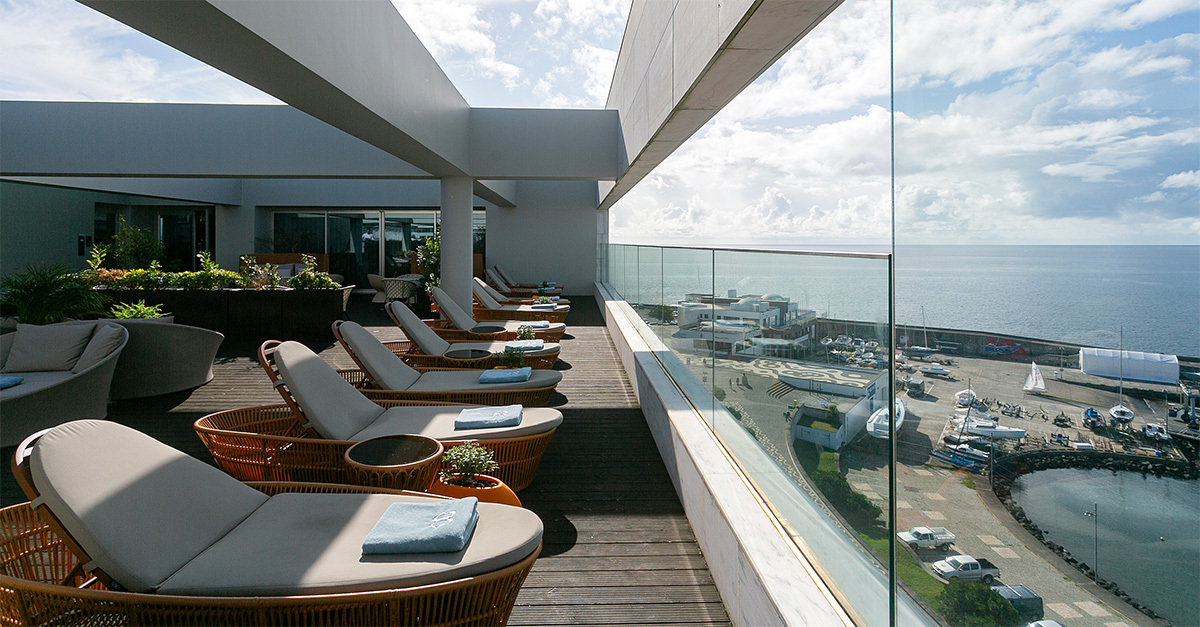
Image credit: Octant Ponta Delgada
Terceira Mar Hotel, Terceira
This property on the outskirts of Angra do Heroísmo has large grounds, a resort-style pool and sun deck. Facilities are good, with indoor heated pool and tennis and padel courts. The staff are excellent and the rooms spacious, but the food is unremarkable – clients will be better strolling to Angra’s restaurants. From £51 a night.
bensaudehotels.com
Azores Wine Company, Pico
The wine-making owners have applied terroir principles to this sleek, contemporary hotel. A cloistered courtyard shelters guests, just as the winery’s stone walls protect vines. There are six rooms – stylishly simple and deceptively luxurious – and an exceptional restaurant. From £149 a night.
antoniomacanita.com
Getting to the Azores and around
❂ Fly direct to São Miguel from Heathrow with British Airways, and from Stansted with Ryanair, during the summer; year-round there are flights via Lisbon with TAP Air Portugal and Azores Airlines, which can pair with regional departures from around the UK. TAP also flies to Terceira, and Azores Airlines to Terceira, Pico and Horta from Lisbon.
❂ Azores Airlines offers flights between all nine islands. Atlânticoline’s ferries provide an alternative for hopping between nearby islands, particularly Faial, Pico and São Jorge, or between Corvo and Flores.
Lead image credit: Shutterstock/TTstudio

